FOR our second long odyssey in Greece, my partner Jim and I spent 14 months in Koroni, Messinia, which became the basis for my third travel memoir, A Scorpion In The Lemon Tree. While the Mani had been our first choice, we ended up in Messinia, the left-hand peninsula in the southern Peloponnese. If you want to know how that happened, you’ll have to read the book. But this remote peninsula didn’t disappoint. It’s a laid-back corner of the country, with a great climate and some fascinating, often hard-to-find, corners, where we encountered some spooky sites and hidden places, most of which were mentioned in the book.
- The Hand of God Tree.
This is one of the most curious things I’ve ever seen. It was Wallace, our dear Jack Russell, with his typical questing nature, who really discovered this strange tree, dragging us over to see it in the grounds of the small, deserted monastery of Ayioi Theodoroi, near the village of Homatero, west of Koroni. We had searched out the papas that day, who oversees the monastery, and were given the key to the church and instructions on how to find this fascinating place tucked into the side of a wooded ravine. Dating from the 12th century, much of its outer buildings lie in ruins but the Byzantine church, with its pantiled roof, is in good condition.
It was the tree, however, in the back garden that first captured our imagination with what appeared to be the shape of a huge closed hand on a large section of the trunk. From a distance, it looked man-made, sculpted, and yet on closer inspection we weren’t quite so sure because there was a large amount of bark left over the ‘knuckle’ of the hand.
Or was it something else entirely? As I wrote in Chapter 16 of the book:
“(The hand) was over a foot high and two feet wide and too smooth for a human carving, but with all the signs of being something natural, fashioned by the wind and the rain perhaps over many decades. We called it the Hand of God Tree, given its surroundings and found it curiously appealing.”
Later on, when we met up with Papa Theodoros at his village house and showed him our photos of the tree, he smiled at the title we’d given it and I asked him what the story was behind it. He told me the tree was very old, a carob tree, but if you what to know what his explanation was, and what he thought about many other fascinating subjects you can read about them in A Scorpion In The Lemon Tree. You can also read about the history of this monastery in past centuries, which was brutal at times, and probably accounts for the slightly chilly and forlorn atmosphere we encountered there.
If you’ve read Scorpion, let me know your opinion of the strange Hand of God Tree.
The rest of the monastery did not disappoint and inside the old church was a fascinating collection of frescos dating back to the 16th century, including some typically bizarre frescos depicting the fate of non-believers. If you look carefully at the example above you’ll see a bizarre half owl/fish creature on the mast of the boat.
- Brigadoon meets rural Messinia
There are many villages on the outskirts of Koroni that are charming, but one of its secret places is the sweet village of Falanthi on a road that leads west to the Homatero monastery and some other smaller villages. Falanthi was once a thriving settlement, with a successful mining operation, but now supports a small rural population, an olive press and several lovely churches, including the small white chapel dedicated to Saint Pelagia which, curiously, has a spring rising up from under its altar and its outlet is in the courtyard of the taverna next door, called the Ayia Playia ( or Agia Plagia). If you happen to find yourself there on the feast day of Saint Pelagia in early May, when the church is open, you might be lucky to see the spring flowing under the altar, as we did.
This was one of our favourite tavernas outside Koroni (which also has many fine establishments some of which I mentioned in my book). Set by the main road and beside a small stream with a stone bridge over it, it has a retro/timewarp magic about it, with a nod to Brigadoon, the mythical Scottish village that was supposed to appear for one day, every 100 years. Except that this fine establishment is open all year, apart from October. What makes this place such a find is not just the quality of the food but the convivial owner Yiorgos (George) Bossinakis, who is a popular local character, and the place attracts a great number of people from Koroni. For more information www.agia-plagia.gr and bookings: tel 27250 41565.
- The church of visions and miracles
The Eleistria church, dedicated to the Virgin Mary, nestles just below the southern flank of Koroni castle, with a stunning view of Zaga beach. This church was built in the late 19th century after a local woman, Maria Stathakis, saw several visions of the Virgin Mary, claiming there were sacred icons buried in the area where the church now sits. When Stathakis enlisted the help of locals to start excavating the site, sure enough three small icons were found in the fissure of rocks and a church was built. The icons have been incorporated into one large icon, which is on display in this church and is at the centre of an important feast day in Koroni every spring. The church has documented many healings that are claimed to be associated with the icon.
It’s a very atmospheric church, quite apart from its airy setting. The grotto where the icons were discovered has been preserved and forms part of a small chapel underneath the church and is worth a visit.
- A beach at the end of the road
Tsapi beach is a place we discovered by accident. It isn’t well sign-posted on the road from Finicounda to Koroni and a couple of small signs say ‘Tsapi camping’ and ‘Maria’s taverna’. The road is good but winds down a hillside for 15 minutes to a secluded beach facing the Ionian Sea. On a stretch of coast with plenty of nice beaches, what’s great about this one? Despite the low-key camping site, two small tavernas, and a tiny white chapel overlooking the beach, there’s nothing here and it feels like the kind of place you discover on islands. It is enclosed on either side and has a long sandy beach, and the water quality here is dazzling. It’s a great place to swim safely, quite shallow, and great for snorkelling. It was one of the nicest places we ever found to swim and the tavernas are a real bonus. Laid-back and unfussy, they serve mostly fish dishes and you can sit all day over lunch and not feel any pressure to leave. There are several nearby beaches, which are totally deserted and you can only walk to them or visit by boat, like tiny Marathi.
- What lies within – Koroni Castle
There is little left of Koroni castle now because it has been targeted down the centuries by a great slew of invaders to this southerly outpost, including the Turks, Franks and Venetians. And the Germans occupied much of it during the Second World War. Its walls remain and a scramble of ruined buildings but it has serious spooky cred and atmosphere and is worth rambling over, as it has set the scene for so much of Koroni’s history.
The castle itself is hardly a secret, dominating the whole town, but what is sometimes overlooked is the gorgeous monastery within it, of Timios Prodromos, which hasn’t changed much since the 19th century when it was built near the site of the ancient Temple of Apollo. It is set within some of the castle walls with walkways, turrets, tiny chapels and an orchard full of fruit trees. At harvest time the friendly nuns here will invite you to help yourself to fruit and offer you slices of loukoumi sweets and cool water. This monastery also played its part in protecting the citizens of Koroni during the German occupation, as I described in the book. The nearby ruined Temple of Apollo sits beside a Byzantine church. The temple was plundered in past centuries but the surrounding walls have been decorated with some of its remaining carved marbles slabs. See if you can spot them.
- Snake Castle
Palaiokastro is an imposing castle on a high bluff overlooking Navarino Bay, on the west coast of the Peloponnese near the town of Pylos. It also overlooks the much- photographed, horseshoe-shaped Voidokoilia beach. Despite its sturdy walls, the 13th century castle, built by the Franks and later added to by the Venetians, is mostly in ruins and has a slightly creepy appeal to it, not to mention a degree of danger. Signs on the outer walls warn the structure inside is unstable but a friend in Kalamata warned us it has become a breeding ground inside for snakes, which will add to the appeal perhaps for some visitors … but we wouldn’t recommend walking inside.
The castle was thought to be impregnable and had a strategic position on this part of the coast but was bombarded by cannon fire by interlopers, including the Turks and Venetians, which explains why it is now a ruin. The best part of visiting this castle is the walk up to its main entrance of sorts, along a narrow track from a small lower car park (beyond the bird-watching sanctuaries) near a sandy beach.
The path winds up over the sea cliffs of the Sykia Pass, and is a wild and exhilarating part of this coastline looking out towards the Ionian Sea. And when you reach the outer walls of the castle finally, they look rather appealing in this remote setting.
Another great find in this area is the nearby village of Gialova, on the edge of Navarino Bay, with a row of beachside tavernas and a nice laid-back vibe. Or if you want to push the boat out, there’s the nearby chic Costa Navarino golfing and spa resort.
Wherever you go in Messinia, there’s a sense that this region is not well-trodden and there are still many other hidden corners waiting for you to discover.
Our recent odyssey in Messinian, which was the inspiration for my third memoir A Scorpion In The Lemon Tree, was featured in a recent article in the Australian Neos Kosmos newspaper. To read click here
For a recent review of the book, see the popular WindyCity Greek site in Chicago.
For more information about this book and the two previous books in the series, charting our adventures in southern Greece during the crisis, go to the books page on the website www.bigfatgreekodyssey.com or the books page on Facebook www.facebook.com/ThingsCanOnlyGetFeta
The new book is on all Amazon sites:
To buy either of my first two books please click on the Amazon links below:
Thanks for calling by. x
© All rights reserved. All text and photographs copyright of the authors 2010 to 2018. No content/text or photographs may be copied from the blog without the prior written permission of the authors. This applies to all posts on the blog.
Subscribe to Blog via Email
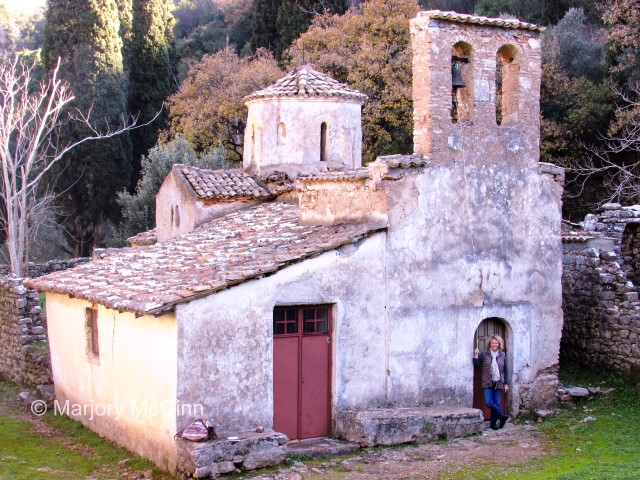
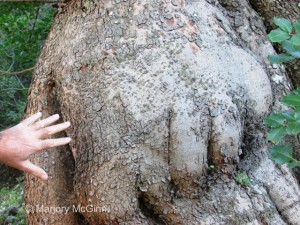
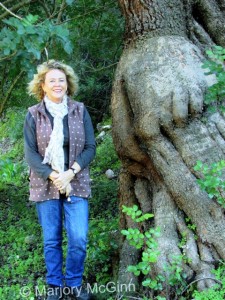
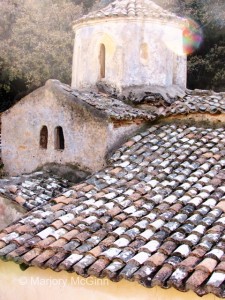
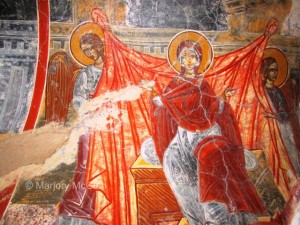
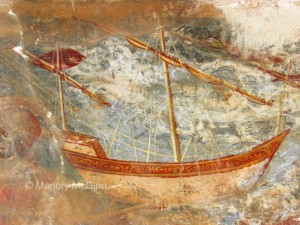
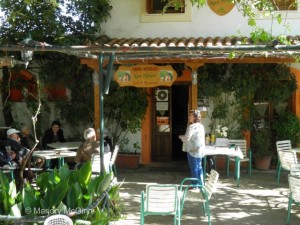
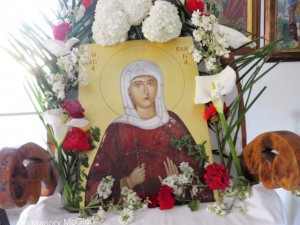
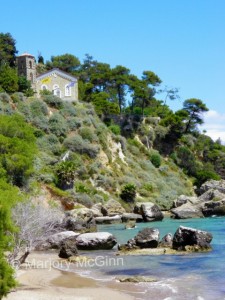
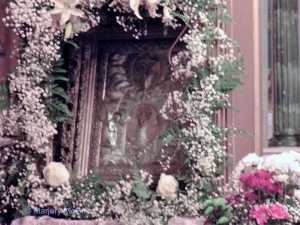
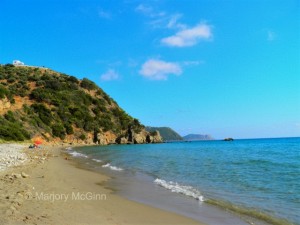
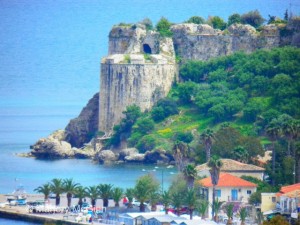
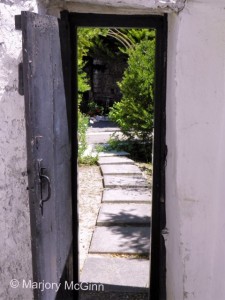
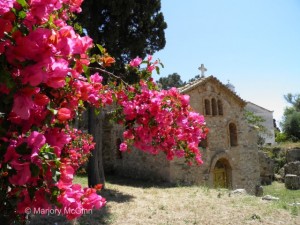
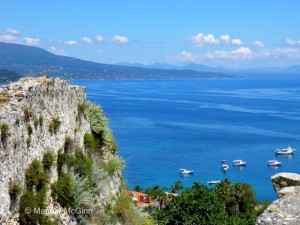
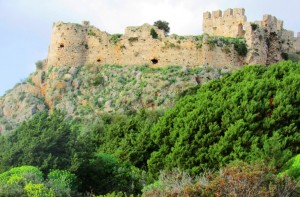
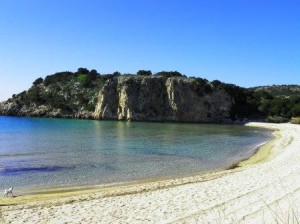
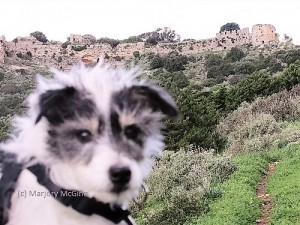
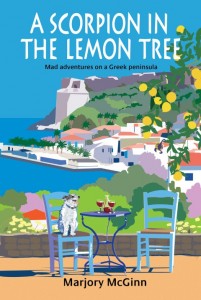

Hi Marjory,
I hope all is well. My name is Tony Stamatopoulos from Melbourne. I have just finished reading A Scorpion In The Lemon Tree and can I say ‘thank you’ for a wonderful experience.
My late father was from Koroni and mum is from Agia Andrea. Your description of the scenery and smells of the wild flowers brought it all back to me. At times wiping tears, reminding me of my Dad, your writing made me feel like a bee buzzing right next to you. All the churches, beaches and tavernas, I was taking steps through all these places as you and Jim did. Wow, I need to go back one more time to see my ageing aunt and cousins.
Your cheerful characters along the way painted Koroni perfectly. I could go on for hours, but once again thank you so much for a wonderful book which l have passed on to my sister. Can’t wait to read your other titles.
Για σας!
Hi Tony,
What a wonderful message you’ve written. Thank you so much. The greatest reward for writers is being able to carry readers along on a personal journey and sometimes make them feel the way we do about the experience. Thanks for sharing your thoughts, particularly about your father and your feelings about Greece.
I do hope you will go back and catch up with the rest of your family. How lucky you are to have roots in a region with so many warm and distinctive people.
Να ειστε παντα καλα.
Regards,
Marjory